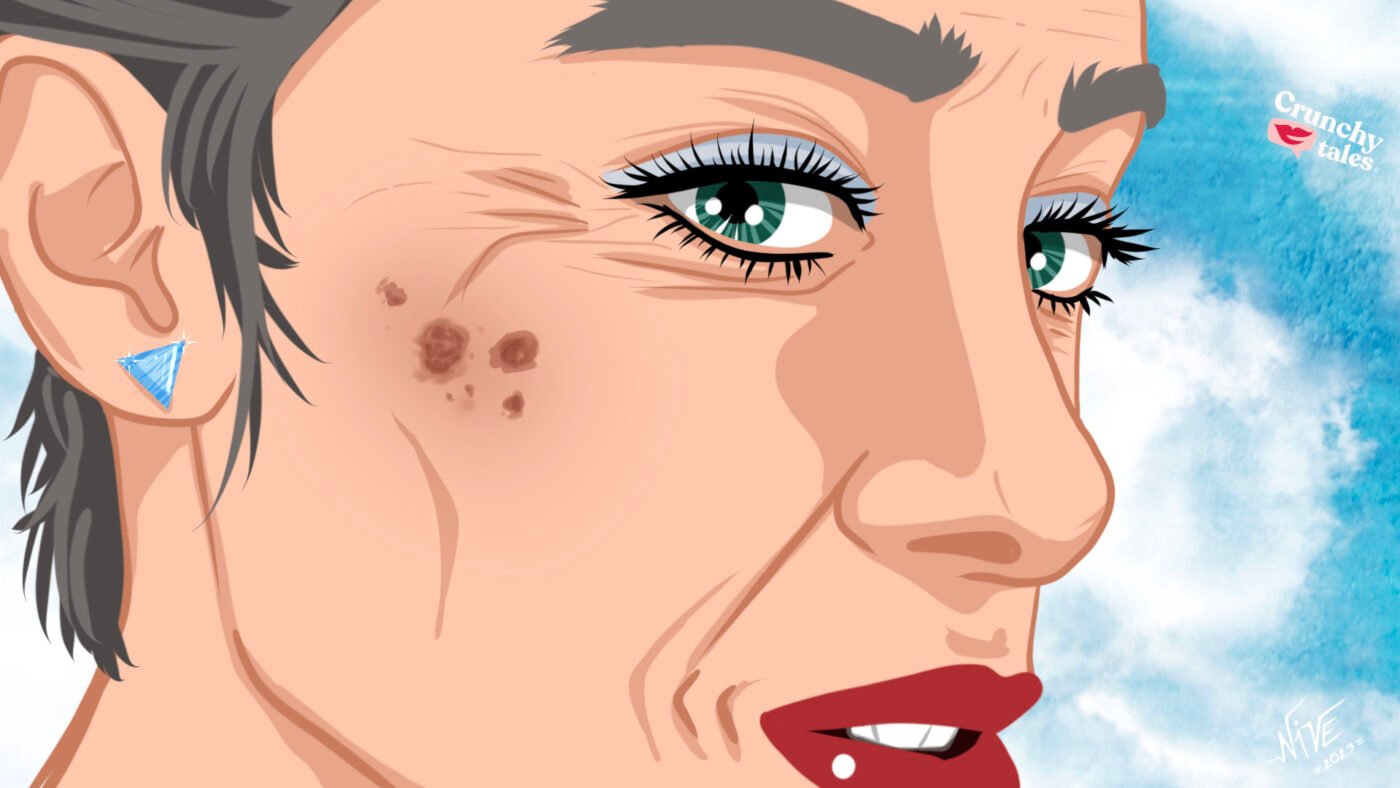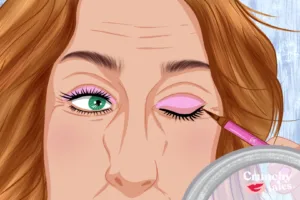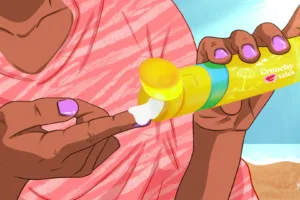What You Should Know About Age Spots And How To Treat Them
If there’s something that gives away your age more than wrinkles it’s dark spots.
Most commonly occurring in people over 40 and around menopause (this is due to the decrease of oestrogen, leading to a higher production of melanin), those brown patches are caused by overactive pigment cells responding to the ultraviolet light in sunshine.
“This exposure accelerates the production of melanin, which creates colour in the skin“, explains dermatologists at Mayo Clinic. “As you age, these high concentrations of melanin can clump together and form spots on the skin“.
Basically, if you’ve been a sun worshipper for years, don’t be surprised to see age spots on areas of the body that are more frequently exposed such as your face, neck, décolleté, shoulders, forearms and hands.
Having said that, you’re probably still wondering how you can get rid of them. Your grandma would try lemon juice to lighten those brown spots, but today there are better and faster options, depending on their number and location.
What I can do to tackle my age spots?
Like most things related to health care, prevention is crucial. The most effective way to deal with age spots is to delay their appearance in the first place.
- Sun protection is essential
Sun protection is the most significant step you can take to help prevent age spots from forming. It’s important to remember that the sun’s rays affect skin even on cloudy days, so get the protection you need and apply a broad spectrum every time you go out.
It’s also important to limit the time you spend in the sun and wear protective clothing including hats and sunglasses whenever possible.
For generally healthier skin, opt for food that can help reduce the appearance of ageing by fighting inflammation and supporting healthy collagen formation, like kale, berries, nuts, bone broth and salmon.
- Great make-up is your ally
Of course, good make-up can do wonders. Effective ways to hide age spots on the face include using a great primer, concealer products, foundation and opaque powders.
“Before applying your foundation, use a tinted moisturiser or CC cream to create an even base and to cover minor blemishes,” make-up artist Lan Nguyen-Grealis recommends. “Then, add another layer of your chosen foundation, giving more coverage if needed. The best foundation formulas for covering age spots on the face are products with thicker consistencies – such as stick or cream foundations – as these tend not to wear off as quickly as liquid formulas. To set everything in place, use a pressed or a loose powder to maintain the coverage“.
A colour-correcting concealer on any spots can help, too. To pick the right shade, you may want to use a colour that’s opposite of what you’re trying to conceal in order to blur it out. When it comes to age spots, yellow and peach shades are both good options.
How can I get rid of age spots?
Once age spots have developed you can opt for different solutions to help fade them and prevent their re-appearance. Either via procedures or creams, a dermatologist has the expertise needed to create a treatment plan tailored to your individual needs.
- Procedures
Procedures, which include cryosurgery, laser therapy and chemical peel and microdermabrasion, tend to work faster but cost more and might cause some unwanted side effects (eg. redness or bruising).
- Laser or intense-pulsed therapy tends to break apart the melanin creating the spot while leaving surrounding skin cells unharmed
- Dermabrasion or microdermabrasion can tackle age spots from the surface down
- A chemical peel can remove the skin layers affected by the discolouration and stimulate new, spot-free tissue growth
According to the American Academy Of Dermatology, “One or two laser treatments can treat age spots quickly, and you’ll likely have longer-lasting results than with a cream that can fade age spots“.
- Topical Treatments
Creams and lotions, on the other hand, are effective but require discipline. To see results, you have to apply them once or twice a day for weeks or months.
Some of these items are over-the-counter and others will need a prescription from a dermatologist.
Specially formulated to reduce age spots (and other forms of hyperpigmentation) for more even and radiant skin, dermo-cosmetic products can be used year-round and also extend the results of a dermatological treatment such as a chemical peel or laser therapy.
You can also be advised to start first with topical treatments that inhibit melanin production. For instance, retinoids, vitamin C creams and/or serums, hydroquinone, and chemical exfoliants.
Having said that, age spots are harmless. But it is still recommended that you have them checked by a doctor or dermatologist if you notice the size, shape, or appearance of your age spots changing over time.
Like this post? Support Us or Sign up to our newsletter to get more articles like this delivered straight to your inbox!





